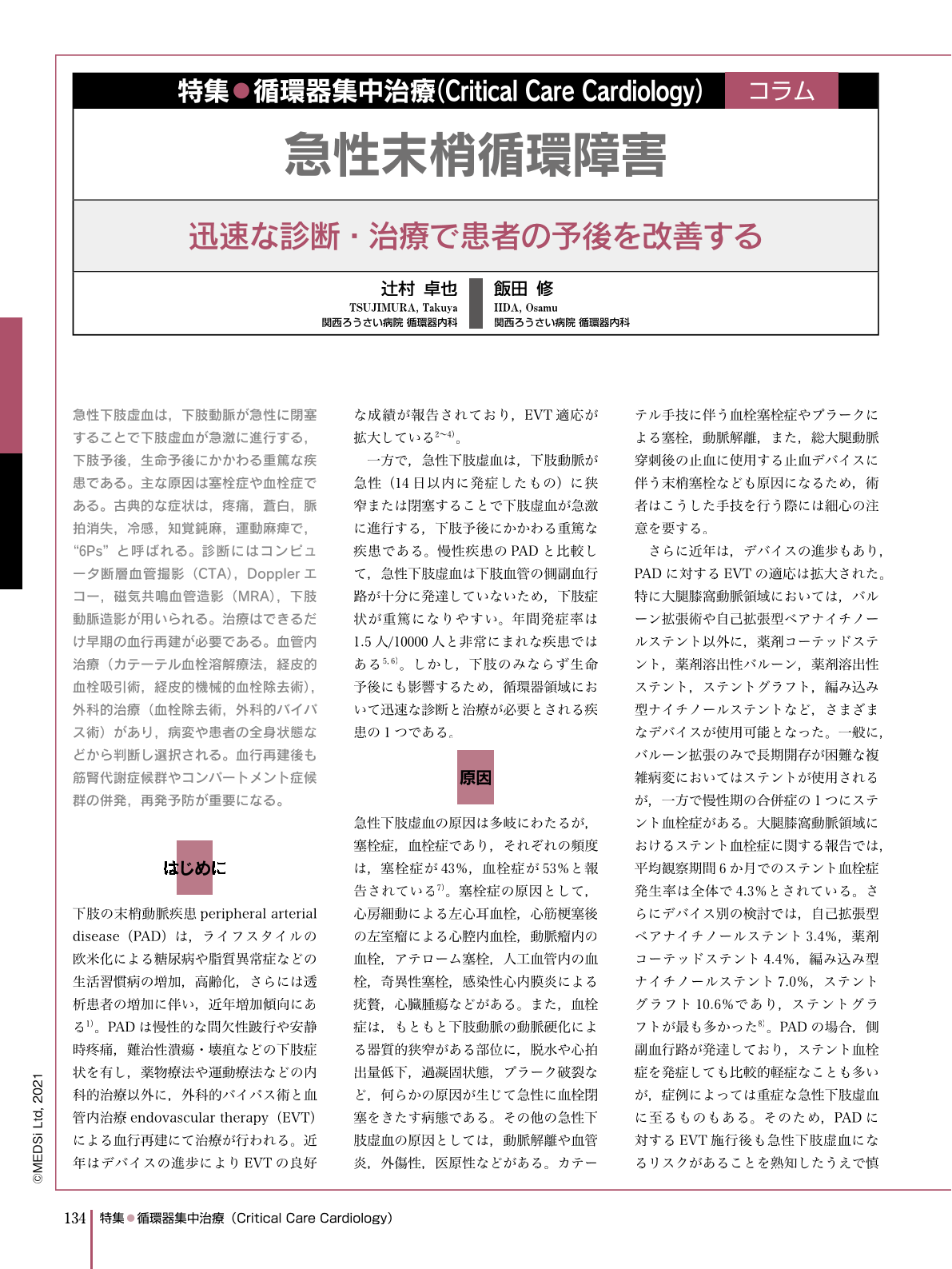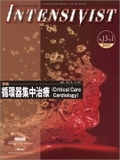Japanese
English
- 有料閲覧
- Abstract 文献概要
- 1ページ目 Look Inside
- 参考文献 Reference
急性下肢虚血は,下肢動脈が急性に閉塞することで下肢虚血が急激に進行する,下肢予後,生命予後にかかわる重篤な疾患である。主な原因は塞栓症や血栓症である。古典的な症状は,疼痛,蒼白,脈拍消失,冷感,知覚鈍麻,運動麻痺で,“6Ps”と呼ばれる。診断にはコンピュータ断層血管撮影(CTA),Dopplerエコー,磁気共鳴血管造影(MRA),下肢動脈造影が用いられる。治療はできるだけ早期の血行再建が必要である。血管内治療(カテーテル血栓溶解療法,経皮的血栓吸引術,経皮的機械的血栓除去術),外科的治療(血栓除去術,外科的バイパス術)があり,病変や患者の全身状態などから判断し選択される。血行再建後も筋腎代謝症候群やコンパートメント症候群の併発,再発予防が重要になる。
Acute limb ischemia (ALI) is characterized by a sudden decrease in arterial perfusion of the limb, with a potential threat to the survival of the limb and patient. The major causes of ALI are embolism and in situ thrombosis. The classical symptoms of patients with ALI are pain, pallor, paralysis, pulse deficit, paresthesia and poikilothermia, referred to as the “6Ps”. ALI is usually diagnosed by computed tomography angiography, duplex ultrasound, magnetic resonance angiography, and aortography. The treatment of ALI requires revascularization as early as possible. Endovascular therapy (catheter thrombolysis, percutaneous thrombus aspiration, and percutaneous mechanical thrombectomy) and surgical treatment (surgical thrombectomy and surgical bypass) are available, depending on the lesion and the patient's general condition. After revascularization, it is important to manage the myonephropathic metabolic syndrome and compartment syndrome, and to prevent recurrence of ALI.

Copyright © 2021, MEDICAL SCIENCES INTERNATIONAL, LTD. All rights reserved.


